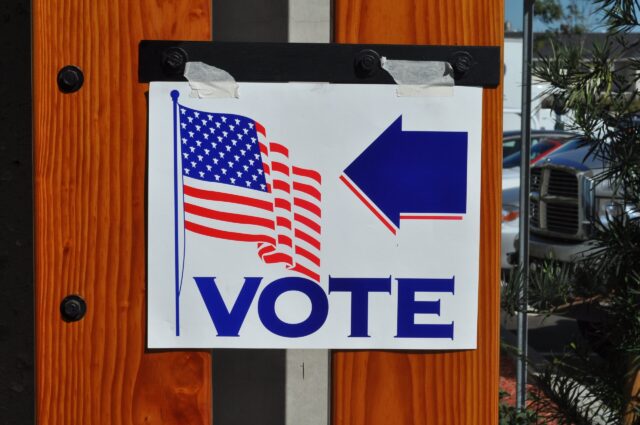Liberals and Democrats are claiming that the Supreme Court is poised to make a ruling that will restrict voting rights because race will no longer be considered in districting.
This is false.
Under the U.S. Constitution, all adults aged 18 and over have the right to vote, and they will continue to have that right. No ruling or policy under consideration eliminates or limits that constitutional guarantee.
What critics are truly upset about is that race will no longer be used to determine electoral districting. The Trump administration argued that race had been overemphasized in the process, violating the Constitution’s Equal Protection Clause. The move aims to ensure that district boundaries are drawn based on population and geography, not racial calculations.
This debate, and the exaggerated claims that someone is losing their rights, reveal a deeper divide between the two parties. Republicans argue that equality means the same rules for everyone, regardless of race. Democrats, on the other hand, insist that equality requires different rules for different groups based on race
The Supreme Court appeared inclined to further restrict the use of race in redistricting. During recent arguments, conservative justices, including Brett Kavanaugh and Chief Justice John Roberts, questioned whether race-based remedies should continue indefinitely, suggesting that the Court may soon impose new limits on when race can factor into drawing congressional maps.
The Court’s three liberal justices, however, warned that weakening Section 2 of the Voting Rights Act would effectively dismantle the law and reduce minority representation in Congress.
Democrats argue that Section 2 is essential for protecting minority voting rights and warn that a conservative victory in the current Louisiana case could trigger widespread redistricting. They claim this would reduce the number of minority-held seats, particularly across the South.
However, the United States does not have a quota system, and no congressional seats are specifically designated as “minority seats.” Fair, race-neutral voting would simply result in all seats being awarded to the candidates who receive the most votes, regardless of race.
The Court’s decision, expected by mid-2026, could mark another major rollback of federal race-based policies, following the 2013 elimination of Section 5 of the Voting Rights Act and the 2023 decision ending affirmative action in college admissions.
Democrats claim that minority “voting power” or “electoral influence,” will be diluted. The Act prohibits voting practices that “deny or abridge the right to vote on account of race.” Over time, courts have interpreted “abridge” to include not only preventing people from voting but also drawing district lines that intentionally dilute minority voting strength. Democrats argue that the Act ensures the right for every vote to carry equal weight and influence.
However, even if the current interpretation of the Act is narrowed or overturned, everyone’s vote will still count equally, one person, one vote. The change would not diminish anyone’s voting power; it would simply mean that election outcomes are determined by voters’ choices rather than by racially engineered districts.
The Voting Rights Act of 1965 was enacted because, even after Black Americans were granted the legal right to vote, many states continued to draw district lines in ways that diluted their political influence. For instance, if a city was 40 percent Black, districts could be designed so that Black voters were divided into multiple districts, always remaining a 20 percent minority in each one.
The law therefore required that when racial minorities are geographically concentrated, district lines should be drawn to give them a fair opportunity to elect representatives of their choice.
A clear example of how this system works can be seen in Alabama. The state’s population is about 27 percent Black, yet under its 2021 congressional map, only one of seven districts was drawn where Black voters formed a majority. A federal court ruled that this violated the Voting Rights Act, noting that a second district could reasonably be drawn where Black voters would have meaningful electoral influence.
Critics of race-based mapping argue that districts should be drawn according to geography rather than race. While 27 percent of Alabama’s population is Black, that does not mean that 1.89 of the state’s seven congressional districts must be majority-Black. In reality, populations are not evenly distributed, and Black communities are often spread across several regions. Consequently, the number of Black-majority districts may not align perfectly with the percentage of African Americans in the state.
Redistricting based on race also tends to produce distorted, irregularly shaped districts that ignore natural geographic and community boundaries. Far from promoting fairness, this practice often deepens racial divisions by presuming that people vote according to race rather than their individual beliefs or interests. It undermines the colorblind ideal that America strives for and ultimately risks reinforcing the very divisions it claims to resolve.
Race-conscious redistricting undermines the very principles of equality and fairness on which the Constitution is built. It treats individuals as members of racial groups rather than as citizens with equal rights under the law. Justice Clarence Thomas has long maintained that race-based districting itself violates the Equal Protection Clause because it substitutes collective identity for individual equality.
It also relies on flawed assumptions that Black voters and White voters inherently want different things or that only someone of the same race can represent a community’s interests. These notions are outdated and reductive. Political views are diverse within every racial group, and treating minorities as monolithic voting blocs ignores that reality.
At its core, race-based redistricting carries a condescending message: that certain racial groups cannot compete equally in the democratic process without special assistance. This idea undermines both individual dignity and faith in democracy. Instead of fostering unity and equality, it perpetuates dependence and division, weakening the very system it claims to make fair.











